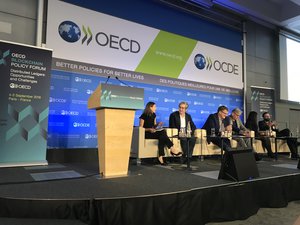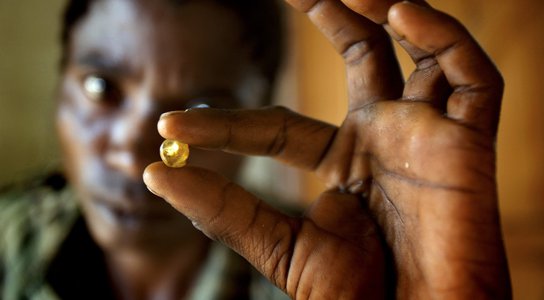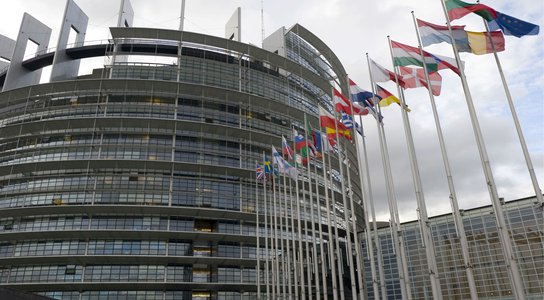I recently attended the OECD's first major conference dedicated to discussing the opportunities and challenges of distributed ledger technology. The two-day policy forum featured prime ministers, the World Bank’s vice president and several senior government officials among the nearly 1200 participants representing 70 countries.
Although this technology, more commonly known as blockchain, is now celebrating its tenth birthday, the buzz around it and its mainstream applications are more recent. In the last few years, there’s been increasing excitement about its potential to transform business as we know it, as more and more proponents claim that blockchain is the future of data transparency.
At its core, blockchain is a distributed electronic ledger, supported by a host of networks around the world, making it entirely decentralized. Blockchain is unique in that the data it holds cannot be changed or deleted. It’s easy to follow transactions and they are tamper-proof. These features make blockchain especially attractive as a more efficient way of maintaining and managing digitized data.

OECD Blockchain Forum session titled 'Blockchain in Supply Chains'. Credit: Global Witness
The conference showcased dozens of ideas aiming to efficiently manage food safety, protect intellectual property rights, combat human trafficking and more – all underpinned by a distributed ledger. Although some urged caution, the message at the forum was clear: if there’s a problem you want to solve, blockchain is the answer you’ve been looking for.
But, while distributed ledger technology can improve the management and sharing of information, we must recognize both its limits and its potential negative impacts. Many of the ideas presented at the forum have not yet been actualized or tested, and there is still a lot to learn.
Blockchain’s rising popularity in the world of responsible mineral sourcing is a case in point. The world over, mineral supply chains have funded conflicts, corruption and human rights abuses. New initiatives using blockchain in this sphere have made headlines. They promise to provide end-user companies that are many steps removed from mines and trading hubs with reliable, transparent information about where the minerals they use have come from. This sounds great in theory, but responsible sourcing is not that simple.
Establishing real responsible mineral trading, the kind that disrupts the entrenched business models that perpetuate corruption, human rights abuses and conflict-financing, will take more than technological innovation.
In the first place, traceability information only gives companies a limited view of what is really going on along their supply chains. To understand the full picture, one would have to capture a whole host of other information, including but not limited to environmental risks, working conditions, the involvement of armed groups in mining sites or the presence of child labor. Responsible mineral sourcing is more than just an exercise in traceability. Any application of blockchain focused solely on traceability will allow abuses and exploitation at the bottom of some supply chains to go unchecked.
Second, blockchain is only a tool for holding and sharing information. On its own, the technology provides no guarantee for the accuracy of the data that is entered – that’s still open to human influence. As several people highlighted at the forum: if you put garbage in, you’ll get garbage out. This issue is particularly significant in many mineral-producing areas around the world where information gaps and limitations persist: credible data about mineral production, trading and sourcing practices, particularly in remote areas, remains scarce. Independent, human research and monitoring is essential to ensure data is credible and robust.

Blockchain is a distributed electronic ledger, supported by a host of networks around the world.
Third, blockchain risks further marginalizing artisanal mining communities unable to participate in or access this particular tech revolution. Artisanal mining employs 40.5 million people globally and many depend on it for their livelihood. Although some blockchain schemes are being developed to apply to artisanal mining supply chains in particular, these are localized. Blockchain must not unintentionally become a market-entry barrier for those who cannot, by dint of circumstance alone, access the technology.
Fourth, if companies treat blockchain the way that they’ve treated industry responsible sourcing schemes, and attempt to pass responsibility for their supply chains wholesale onto the tech, blockchain risks becoming another harmful distraction from the individual company efforts needed to bring about much-needed supply chain reforms. The problems along mineral supply chains are only in part linked to paucity of data and its management. The main driver in play is the business behavior of the companies producing and trading these resources – and it is that, first and foremost, that must change.
Finally, we must also consider that as long as state and local authorities turn a blind eye, corrupt or abusive trading practices will continue. Governments have an important role to play in combatting the impunity that allows problematic minerals to be bought and sold without scrutiny or accountability. Blockchain does not reduce state responsibilities.
Risk-based supply chain due diligence, as laid out in the international standard developed by the OECD, requires a broad understanding of how supply chains function and encourages companies to take a holistic approach to checking for risks.
Although there may be ways to design applications using blockchain that effectively capture and manage the type of detailed, qualitative information needed to enrich companies’ risk assessments, until these tools are fully developed, there is no replacement for communicating with suppliers to attain the detailed and specific information needed to effectively assess and manage risks.
As innovative and exciting as it is, this new technology is not the ultimate answer to establishing equitable and fair mineral supply chains that some would like us to believe. Supply chain due diligence – the tools companies use, the policies they put in place, and the practices they adopt - must always be oriented towards changing trading behaviors so that they improve circumstances for those in producing countries and mining communities. Blockchain might be one of many means that helps towards this end, but it is not the end in itself.


